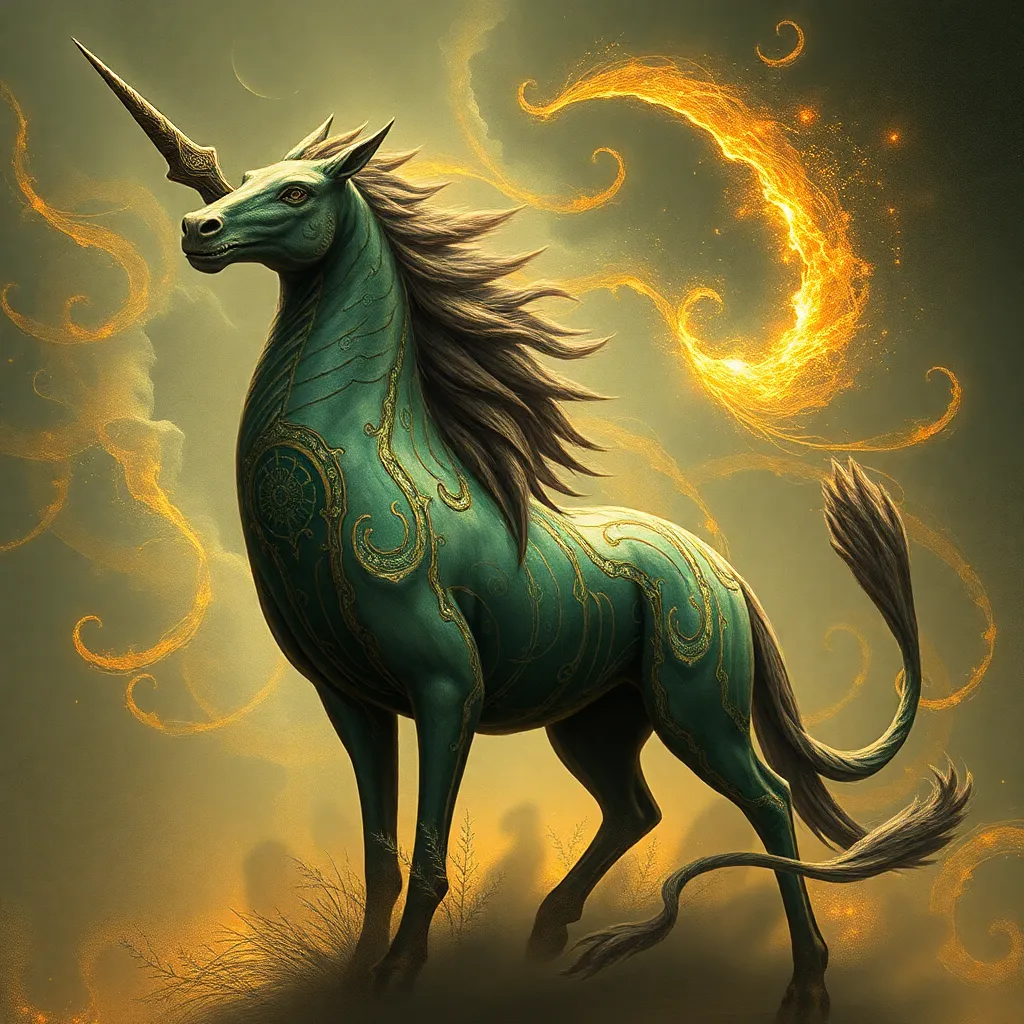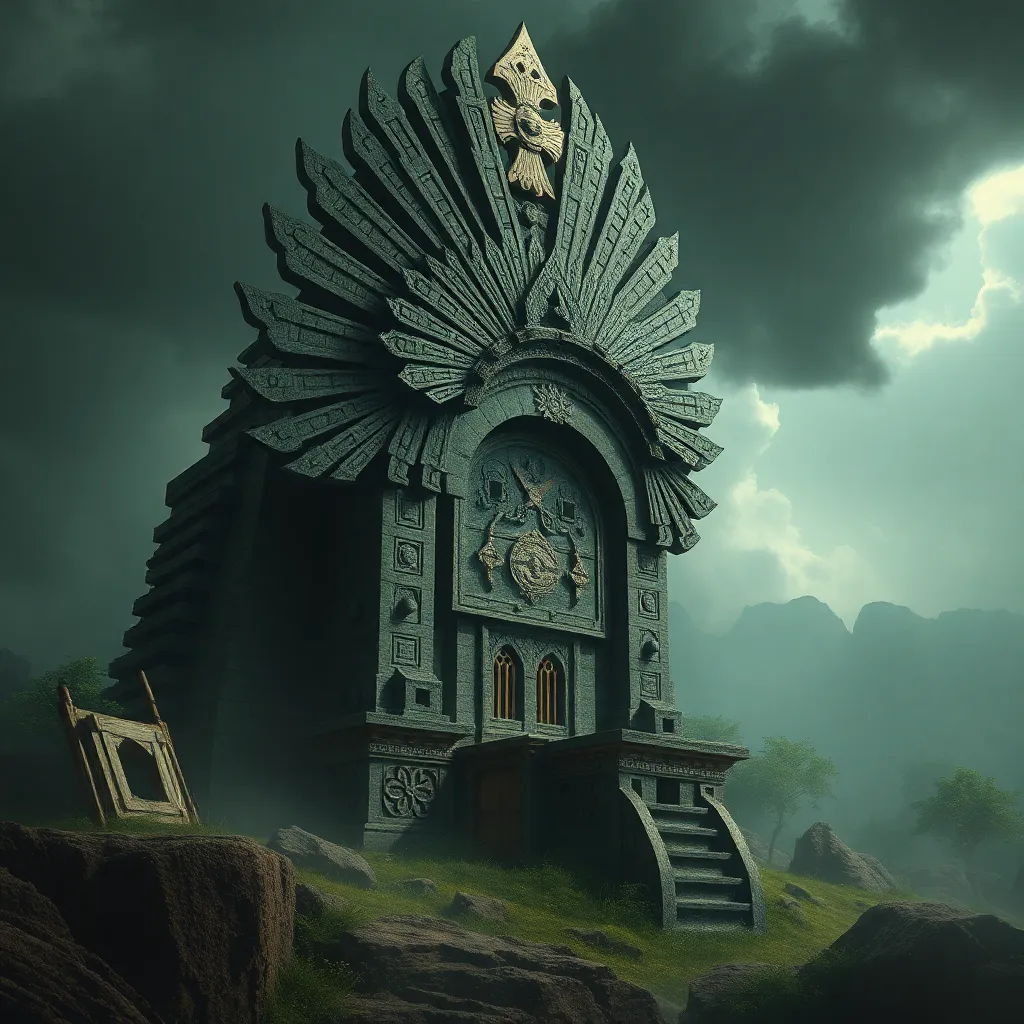The Tengu’s Legacy: Exploring Their Impact on the World and Their Enduring Influence
I. Introduction to Tengu: Mythical Creatures of Japanese Folklore
The Tengu, a fascinating creature rooted in Japanese folklore, has captivated the imagination of people for centuries. Often depicted with human and avian features, Tengu embody a complex blend of traits that make them unique among mythical beings. Their origins can be traced back to ancient times, where they were initially considered harbingers of bad omens but later evolved into protectors of nature and culture.
In this article, we will delve into the rich tapestry of Tengu mythology, examining their historical context, dual nature as guardians and tricksters, presence in popular culture, spiritual significance, and their enduring influence not only in Japan but around the world. By doing so, we aim to highlight the importance of Tengu in the cultural heritage and contemporary narratives of society.
II. Historical Context: The Emergence of Tengu in Japanese Folklore
The Tengu first appeared in Japanese literature and art during the Heian period (794-1185). They were often described as supernatural beings inhabiting mountainous regions, and their earliest representations were more bird-like than human. Over the centuries, the portrayal of Tengu evolved significantly.
- Early References: One of the first notable mentions of Tengu can be found in the “Nihon Shoki,” an ancient chronicle that dates back to the 8th century.
- Evolution of Portrayal: By the Kamakura period (1185-1333), Tengu began to be depicted more anthropomorphically, often wearing the garb of a warrior or monk.
- Cultural Narratives: The duality of Tengu as both protectors and tricksters shaped the moral lessons imparted through their stories, reflecting the complexities of human nature.
III. Tengu as Guardians and Tricksters: Dual Nature in Folklore
Tengu embody a fascinating duality that plays a significant role in their folklore. They are often seen as both guardians of nature and mischievous tricksters who teach valuable lessons.
A. Tengu as Protectors of Mountains and Forests
Traditionally, Tengu are revered as the protectors of mountainous regions and forests. They are believed to guard the wildlife and natural resources, often punishing those who disrespect nature. Their role as guardians signifies the importance of environmental stewardship in Japanese culture.
B. The Trickster Archetype: Lessons and Morals in Tengu Stories
In many tales, Tengu are portrayed as tricksters who outwit human characters. These stories often convey moral lessons about humility, respect for nature, and the consequences of arrogance. The trickster aspect of Tengu serves as a reminder of the unpredictability of life and the importance of wit in overcoming challenges.
C. Comparison with Other Mythical Creatures in Global Folklore
The Tengu’s dual nature can be compared to other trickster figures in global folklore, such as Loki in Norse mythology or Coyote in Native American stories. Each of these figures embodies a blend of chaos and wisdom, reflecting the complexities of existence and the human experience.
IV. Tengu in Popular Culture: From Traditional to Contemporary Representations
The influence of Tengu has permeated various forms of art and media, transitioning from traditional representations to contemporary adaptations.
A. Tengu in Art, Literature, and Theater
Tengu have been depicted in ukiyo-e woodblock prints, Noh theater, and literature. Artists like Katsushika Hokusai have immortalized Tengu in their works, showcasing their unique features and roles in folklore.
B. Adaptations in Modern Media: Anime, Manga, and Video Games
In recent years, Tengu have made appearances in popular anime and manga series, including titles like “Naruto” and “Yokai Watch.” Video games also feature Tengu characters, contributing to their modern representation and appeal to younger audiences.
C. The Globalization of Tengu Mythology and Its Influence on Pop Culture
As Japanese culture has gained global recognition, Tengu mythology has also transcended borders. The incorporation of Tengu in international media highlights their universal themes of nature, duality, and morality, allowing for cross-cultural storytelling.
V. Spiritual and Religious Significance of Tengu
Tengu hold a unique position in the spiritual landscape of Japan, intertwining with Shintoism and Buddhism.
A. Tengu’s Association with Shintoism and Buddhism
In Shinto beliefs, Tengu are seen as spirits of the mountains, while in Buddhism, they are often regarded as protectors of Buddhist teachings. This dual association highlights their importance in both religious traditions.
B. Rituals and Practices Involving Tengu in Japanese Spirituality
Various rituals and festivals celebrate Tengu, emphasizing their role as protectors. Local shrines often feature Tengu imagery, and specific ceremonies are held to honor these mythical beings.
C. The Impact of Tengu on Local Customs and Beliefs
Tengu have influenced local customs, with stories of encounters with Tengu often serving as cautionary tales. These narratives shape community values and beliefs about the natural world and its preservation.
VI. Tengu in Nature and Ecology: Symbolism of the Natural World
Tengu symbolize the intricate relationship between humanity and nature, embodying the elements and the spirit of the wilderness.
A. Tengu as Embodiments of Nature and Its Elements
Tengu are often associated with specific elements of nature, such as wind and mountains. Their presence in folklore serves as a reminder of the significance of these natural elements in Japanese culture.
B. Environmental Conservation Narratives Linked to Tengu
Modern narratives surrounding Tengu often emphasize environmental conservation. As guardians of nature, Tengu inspire efforts to protect the environment and promote sustainability.
C. The Significance of Mountains and Forests in Tengu Lore
The mountainous regions of Japan, where Tengu are believed to reside, are seen as sacred spaces. These areas are often protected and revered, reflecting the cultural significance of the natural landscape in Tengu lore.
VII. The Enduring Influence of Tengu Beyond Japan
The legacy of Tengu extends beyond Japan, influencing cultures and narratives across Asia and even in the West.
A. Tengu-Inspired Characters and Themes in Asian Cultures
Similar beings to Tengu can be found in various Asian mythologies, showcasing the shared cultural values regarding nature and spirituality. Countries like Korea and China have their own versions of avian-like spirits that resemble Tengu.
B. Influence on Western Literature and Media
Tengu have also made their mark in Western literature and media, inspiring characters and themes that resonate with the archetype of the trickster and protector. The blending of these motifs reflects the universal appeal of Tengu stories.
C. The Phenomenon of Tengu in Global Folklore Studies
Scholars of folklore continue to explore the significance of Tengu, examining their role in cultural narratives and their impact on global folklore studies. This ongoing research highlights the relevance of Tengu in understanding cultural exchange and preservation.
VIII. Conclusion: The Ongoing Legacy of Tengu in Modern Society
The Tengu’s legacy is a testament to the enduring power of folklore in shaping cultural identities and values. As we reflect on Tengu’s relevance today, it becomes clear that preserving such narratives is essential for maintaining cultural heritage.
The ongoing interest in Tengu, both in Japan and globally, emphasizes the importance of storytelling in connecting generations and fostering a deeper understanding of our relationship with nature. As societies continue to evolve, the legacy of Tengu will undoubtedly inspire future narratives and cultural expressions, ensuring that these mythical beings remain a vital part of our shared human experience.



